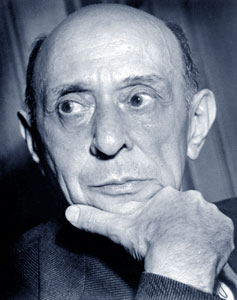By Robert Cinnante

Just mentioning the name Schoenberg is enough to send many listeners running, a name synonymous with the twelve-tone system that the composer and his contemporaries in the Second Viennese School pioneered in the early 20th century. But Verklärte Nacht, op. 4 (Transfigured Night), composed in 1899, pre-dates the composer’s use of organized atonality, and is regarded as one of his most important early works, and arguably one of the most spectacular in the standard chamber music repertory.
Schoenberg’s excursion to the Austrian Countryside in the fall of 1899 proved to be no vacation. In just three short weeks the composer completed this one movement work that seemingly embodies a lifetime. The six instruments seem to speak as one as they deliver the narrative of the poem by Dehmel of the same name, upon which Schoenberg based his composition. The story is of two lovers walking through a forest on a moonlit night. The distressed woman confesses that she is carrying the child of a man that preceded the one she is now with. The man ponders what he has been told, and finally reassures the woman that his love for her is strong enough that he will accept the child as his own. They embrace and continue on their journey.
It is astonishing to think that such an emotionally dense creation could be contained within a half hour. The work is separated into five sections, corresponding to the structure of the poem, but the inevitable spell that it casts upon the listener creates an utter sense of timelessness. Its captivating effect is probably best articulated by Dehmel in a letter written to Schoenberg after the Vienna premiere in which he said, “I had intended to follow the motives of my text in your composition, but soon forgot to do so, I was so enthralled by the music.”

To hear this work and others, join Halcyon Music Festival tonight, July 26th, at Portsmouth’s St. John’s Episcopal Church. For tickets, click here.